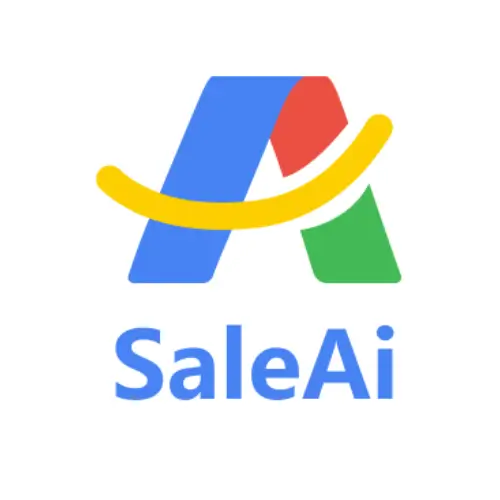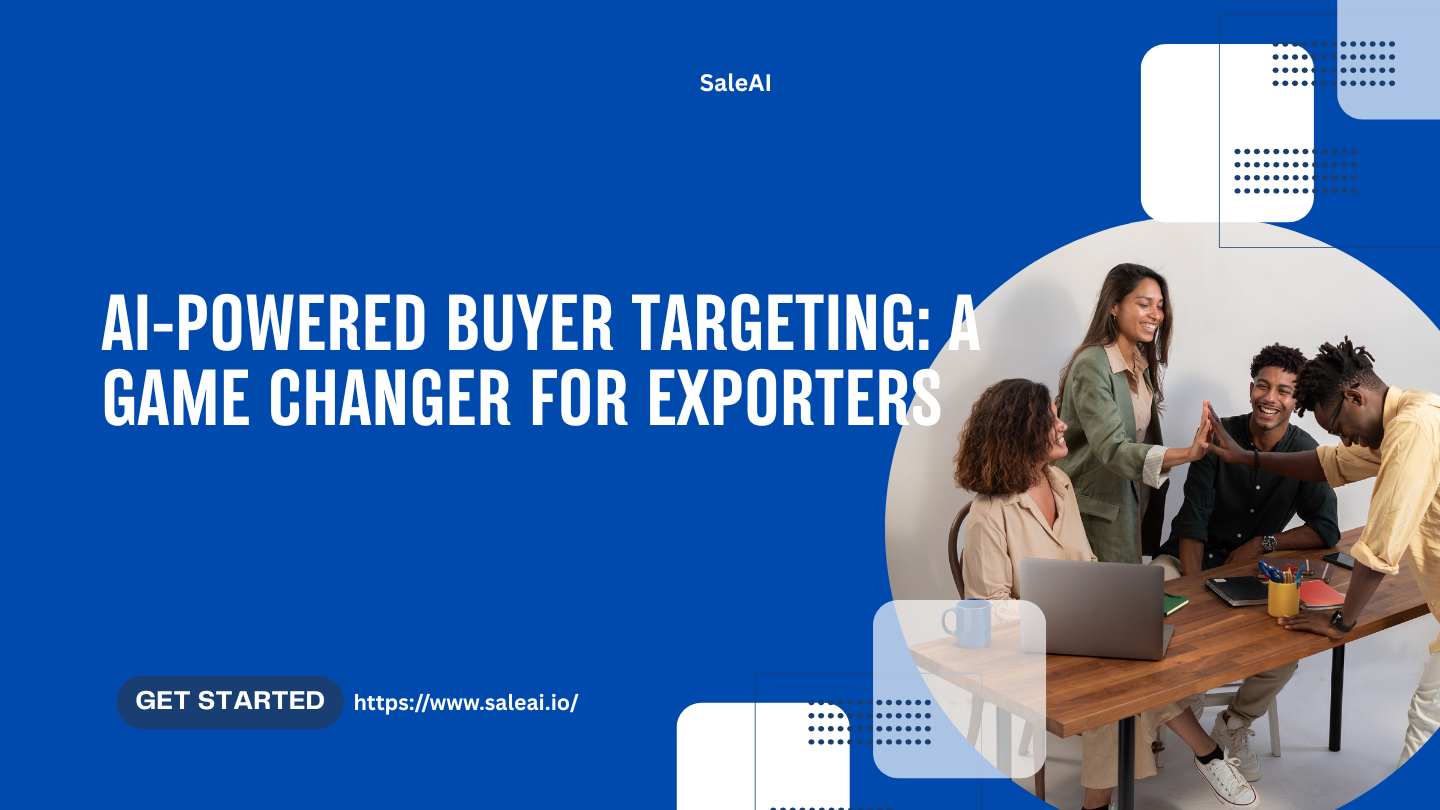出口买家定位的范式转变
买家定位一直是出口贸易成功的基石。但我们处理买家定位的方式正在经历一场革命。传统上对展会、过时的目录和冷门推广的依赖正在被人工智能驱动的精准定位所取代,这彻底改变了出口商寻找、吸引和转化潜在买家的方式。
这不仅仅是技术升级,更是战略转型。人工智能不仅能帮你找到买家,还能让你预测他们的需求,评估他们的行为,并以无与伦比的精准度与他们互动。
那么,出口商该如何真正驾驭这种力量呢?让我们一起深入了解人工智能驱动的买家定位新时代。
为什么传统的买家定位策略不够有效
在探索人工智能之前,我们必须了解为什么传统方法越来越无效:
- 覆盖范围有限:贸易展览会和数据库仅限于特定地区或行业。
- 静态信息:传统目录中的买家详细信息通常很快就会过时。
- 广义定位:一刀切的方法无法引起不同买家的共鸣。
- 效率低下:手动研究和推广会消耗宝贵的时间和资源。
在当今快节奏的全球贸易环境中,这些方法让出口商难以迎头赶上。人工智能改变了游戏规则,将买家定位从被动转向主动。
人工智能在买家定位方面的优势
人工智能带来了一系列功能,彻底改变了出口商识别和吸引买家的方式。以下是其革命性之处:
a. 大规模全球数据聚合
人工智能处理来自多个来源的大量数据集——海关数据、社交媒体活动、贸易记录——并将这些信息综合成可操作的见解。
例如:SaleAI 整合了超过 300 亿条全球贸易记录,以实时识别活跃买家。
b. 购买者行为预测
通过机器学习算法,人工智能可以分析买家活动模式,以预测未来需求或识别可能更换供应商的买家。
关键见解:预测分析可以帮助出口商预测季节性需求高峰或买家偏好的变化。
c. 超个性化
人工智能根据个人买家的属性、偏好和行为来定制推广工作,传递引起共鸣的定制信息。
Case Study:A textile exporter using AI-driven personalization increased buyer engagement rates by 40%.
d. Real-Time Adaptability
AI doesn’t just provide insights; it evolves with the data. As markets change, AI algorithms adapt, ensuring your targeting strategies remain relevant.
Impact:Exporters can pivot quickly to capitalize on emerging opportunities or mitigate risks.
From Data to Decisions: The Buyer Targeting Workflow with AI
Let’s break down the step-by-step process of using AI for buyer targeting:
Step 1: Data Collection and Integration
AI tools like SaleAI aggregate data from diverse sources, including:
- Customs records
- Social media platforms (e.g., LinkedIn, Facebook)
- Trade publications and industry reports
Example Application:SaleAI’s TradeLink Insights pulls real-time customs data to identify active importers by region and industry.
Step 2: Buyer Profiling and Segmentation
AI categorizes buyers into detailed segments based on:
- Industry and product preferences
- Purchasing frequency and volume
- Geographical location and market trends
Why This Matters:Segmentation enables exporters to prioritize high-value buyers and tailor their strategies accordingly.
Step 3: Predictive Targeting
AI algorithms analyze historical data to predict:
- Buyers likely to increase order volumes
- Emerging markets with growing demand
- Companies at risk of leaving current suppliers
Pro Tip:Use this data to target buyers during key decision-making windows, such as budget cycles or seasonal demand peaks.
Step 4: Multi-Channel Engagement
AI automates outreach through channels like:
- Email campaigns
- WhatsApp and SMS messaging
- Social media ads and direct messages
Efficiency Boost:Automation ensures consistent, timely communication with buyers globally.
Step 5: Continuous Optimization
AI tracks campaign performance, monitors buyer interactions, and refines targeting strategies based on real-time feedback.
Dynamic Adaptation:Exporters can adjust their messaging, pricing, or outreach strategies instantly to improve results.
Overcoming Common Challenges inAI-Driven Buyer Targeting
-
Data Overload:
- Challenge:Too much data can overwhelm decision-making.
- Solution:SaleAI filters and prioritizes data, presenting only the most relevant insights.
-
Resistance to Change:
- Challenge:Teams may be hesitant to adopt AI tools.
- Solution:User-friendly interfaces and training sessions make the transition seamless.
-
Initial Investment:
- Challenge:Implementing AI tools requires upfront costs.
- Solution:The ROI from improved buyer targeting and increased conversions offsets these expenses quickly.
Real-World Impact: AI Success Stories
Case Study 1: Machinery Exporter
- 问题:传统电子邮件营销活动的参与率低。
- 解决方案:SaleAI 根据行业对买家进行细分,并相应地定制信息。
- 结果:响应率提高 35%,销售额增加 20%。
案例研究2:食品出口商
- 问题:区域买家定位不准确。
- 解决方案:AI 识别高需求区域并优化定价策略。
- 结果:扩展到两个新市场,产生 100 万美元的额外收入。
买家定位的未来:下一步是什么?
人工智能仅仅是个开始。自然语言处理 (NLP) 和生成式人工智能等新兴技术将:
- 通过实时语言翻译增强买家沟通。
- 生成动态、个性化的营销内容。
- 通过对买家反馈的情绪分析提供更深入的见解。
接受这些创新的出口商将在全球市场上占据领先地位。
结论:利用人工智能改变你的目标定位
人工智能驱动的买家定位不仅仅是一种工具,更是一种战略优势。通过利用 SaleAI 等平台,出口商可以:
- 精准识别并吸引高价值买家。
- 优化外展策略以实现最大投资回报率。
- 在快速变化的全球贸易环境中保持敏捷。





